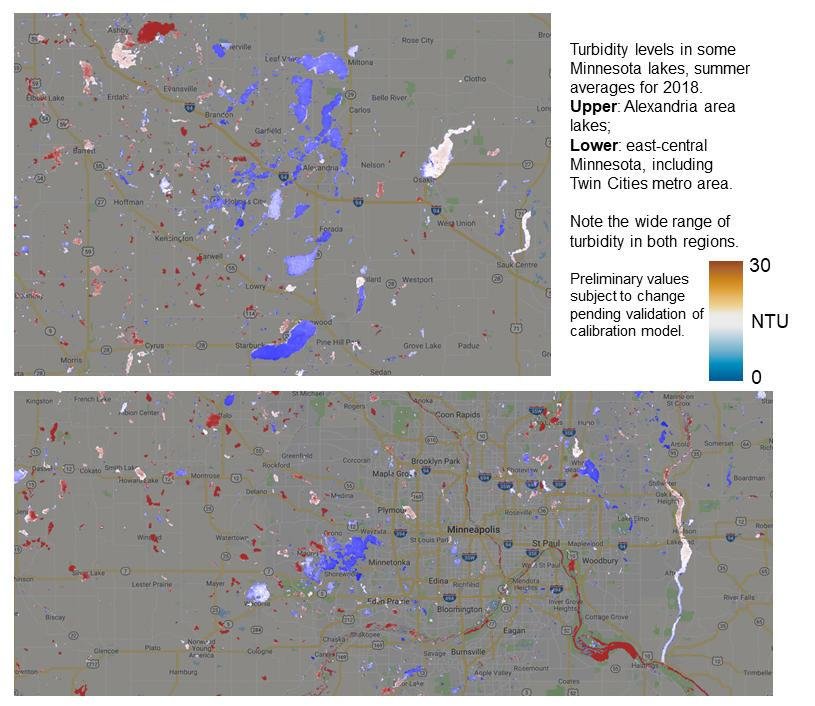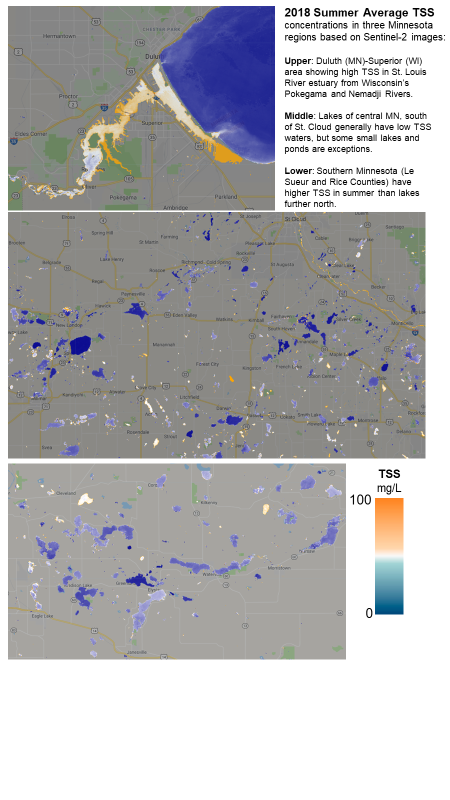Turbidity is a measure of the light scattering caused by suspended particles in natural waters. It is a measure of water clarity, and high levels of turbidity generally indicate poor water quality. Turbidity usually is reported in units of formazin turbidity units (FTU) or the equivalent nephelometric turbidity units (NTU). Background information and how turbidity is measured.
Total Suspended solids (TSS) is the mass concentration (in mg/L) of particles small enough (< a few mm) to remain suspended in the water column by natural levels of turbulence and large enough to be collected on a filter with a specified pore size. There are many sources and kinds of SS, and high SS concentrations also are indicative of poor water quality. Background information on TSS and its measurement.
A sequence of Landsat 8 and Sentinel-2 images of western Lake Superior and the Duluth-Superior area from May and June 2019 showing the widespread distribution of high TSS and turbidity levels in the lake that changed rapidly over time in response to rain events is shown in the following animation. The main source of TSS and turbidity is the Nemadji River which drains a watershed with highly erodible clay soils and flows into Allouez Bay at the southern end of the Duluth-Superior inner bay.
Turbidity in Minnesota Lakes
Turbidity is a commonly measured parameter in water pollution/water quality studies, but it is not commonly measured by limnologists in lake studies. Consequently, only limited information is available on turbidity levels in Minnesota lakes. With support from an LCCMR project, we developed satellite-based procedures using sentinel-2 imagery to measure turbidity in lakes, and results are shown below.

Suspended Solids in Minnesota Lakes
As part of the same LCCMR project, we also developed a satellite-based procedure using Sentinel imagery to measure TSS in lakes and large rivers. Results are shown below. In a previous study on rivers, we developed a method to separate TSS into its two components, volatile or VSS, largely a measure of organic SS) and nonvolatile SS, the inorganic (or mineral) component of SS. These two kinds of SS have very different sources and water quality Implications, and it will be useful to be able to distinguish them in lakes.

